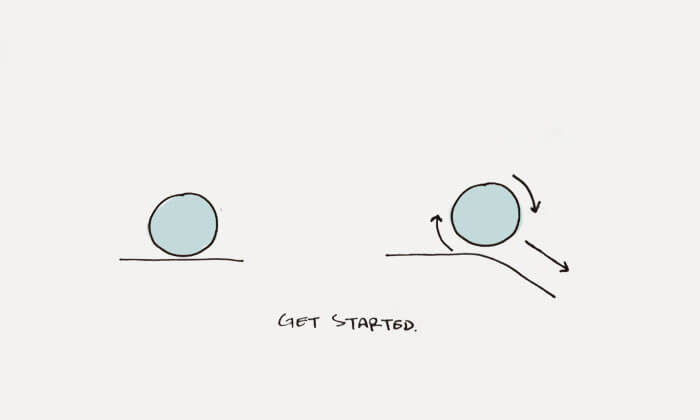The Productivity Guide My Best Productivity and Time-Management Tips, Productivity - how to
The Productivity Guide: Time Management Strategies That Work
What is Productivity?
Let's define productivity. Productivity is a measure of efficiency of a person completing a task. We often assume that productivity means getting more things done each day. Wrong. Productivity is getting important things done consistently. And no matter what you are working on, there are only a few things that are truly important.
Being productive is about maintaining a steady, average speed on a few things, not maximum speed on everything.
Before we talk about how to get started, I wanted to let you know I researched and compiled science-backed ways to stick to good habits and stop procrastinating. Want to check out my insights? Download my free PDF guide “Transform Your Habits” here.
My Top Productivity Strategies
- Eliminate Time Wasting Activities by Using the Eisenhower Box: This simple decision matrix will help you take action, organize tasks, and get more done. The great thing about this matrix is that it can be used for broad productivity plans (“How should I spend my time each week?”) and for smaller, daily plans (“What should I do today?”). Warren Buffett’s “2 List” Strategy: How to Maximize Your Focus and Master Your Priorities: This method comes from the famous investor Warren Buffett and uses a simple 3-step productivity strategy to help you determine your priorities and actions. You may find this method useful for making decisions and getting yourself to commit to doing one thing right away. The Ivy Lee Method: The Daily Routine Experts Recommend for Peak Productivity: This productivity strategy is straightforward: Do the most important thing first each day. The Ivy Lee Method is a dead simple way to implement this strategy. The 15-Minute Routine Anthony Trollope Used to Write 40+ Books: There is one common problem with the approach of ranking your priorities and doing the most important thing first, though. After ranking your priorities for the day, if the number one task is a really big project then it can leave you feeling frustrated because it takes a long time to finish. Writer Anthony Trollope, however, developed a solution to this common problem.
More Productivity Ideas
Most productivity strategies focus on short-term efficiency: how to manage your to-do list effectively, how to get more done each morning, how to shorten your weekly meetings, and so on. These are all reasonable ideas.
We often fail to realize, however, that there are certain strategic choices we need to make if we want to maximize our productivity for the long-term. In these articles below, I break down some ideas about long-term productivity.
Looking for more articles about productivity? I have a full list at the bottom of this page.
Simple Ways to Be More Productive Every Day
Step 1: Manage your energy, not your time.
If you take a moment to think about it, you’ll probably realize that you are better at doing certain tasks at certain times. What type of energy do you have in the morning? Afternoon? Evening? Determine what tasks each energy level and time of day are best suited for.
Step 2: Prepare the night before.
If you only do one thing each day then spend a few minutes each night organizing your to–do list for tomorrow. When I do it right, I’ll outline the article I’m going to write the next day and develop a short list of the most important items for me to accomplish. It takes 10 minutes that night and saves 3 hours the next day.
Step 3: Don’t open email until noon.
Sounds simple. Nobody does it. It took me awhile to get over the urge to open my inbox, but eventually I realized that everything can wait a few hours. Nobody is going to email you about a true emergency (a death in the family, etc.), so leave your email alone for the first few hours of each day. Use the morning to do what’s important rather than responding to what is “urgent.”
Step 4: Turn your phone off and leave it in another room.
Or on your colleague's desk. Or at the very least, put it somewhere that is out of sight. This eliminates the urge to check text messages, Facebook, Twitter, and so on. This simple strategy eliminates the likelihood of slipping into half–work where you waste time dividing your attention among meaningless tasks.
Step 5: Work in a cool place.
Have you ever noticed how you feel groggy and sluggish in a hot room? Turning the temperature down or moving to a cooler place is an easy way to focus your mind and body. (Hat tip to Michael Hyatt for this one.)
Step 6: Sit up or stand up.
When you sit hunched over, your chest is in a collapsed position and your diaphragm is pressing against the bottom of your lungs, which hinders your ability to breathe easily and deeply. Sit up straight or stand up and you’ll find that you can breathe easier and more fully. As a result, your brain will get more oxygen and you’ll be able to concentrate better.
Step 7: Develop a “pre–game routine” to start your day.
My morning routine starts by pouring a cold glass of water. Some people kick off their day with ten minutes of meditation. Similarly, you should have a sequence that starts your morning ritual. This tiny routine signals to your brain that it’s time to get into work mode or exercise mode or whatever mode you need to be in to accomplish your task. Additionally, a pre–game routine helps you overcome a lack of motivation and get things done even when you don’t feel like it.

Комментарии
Отправить комментарий